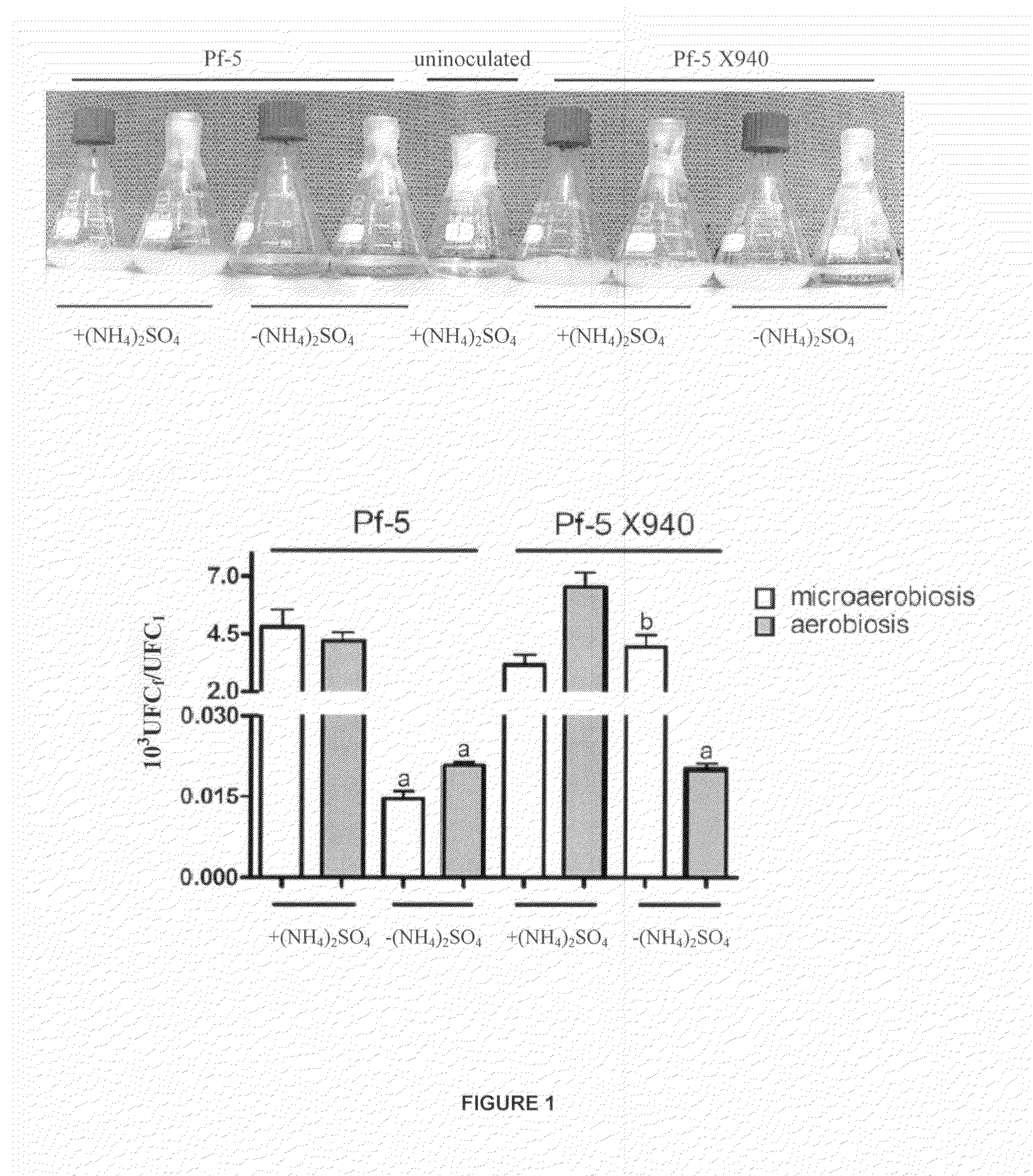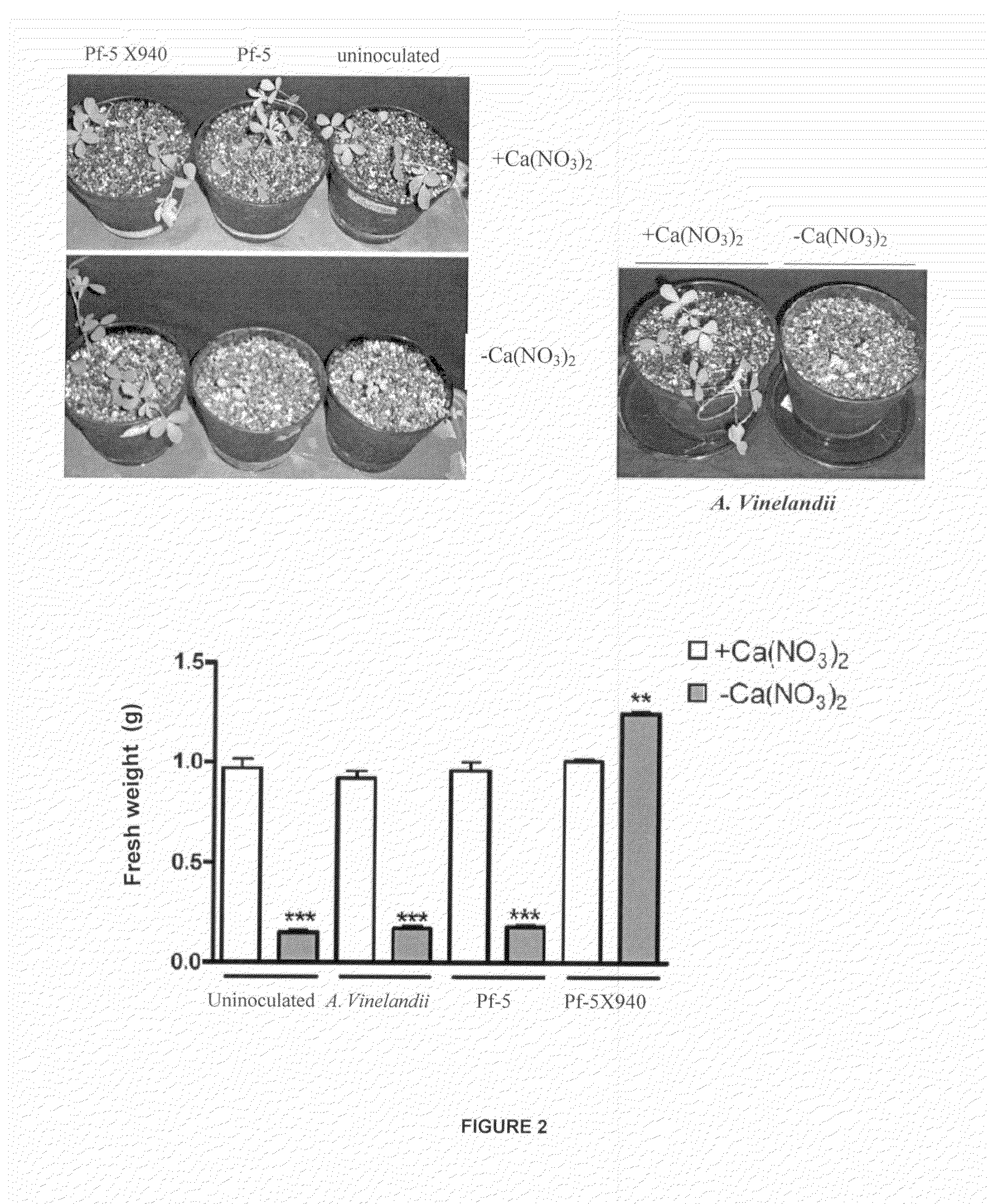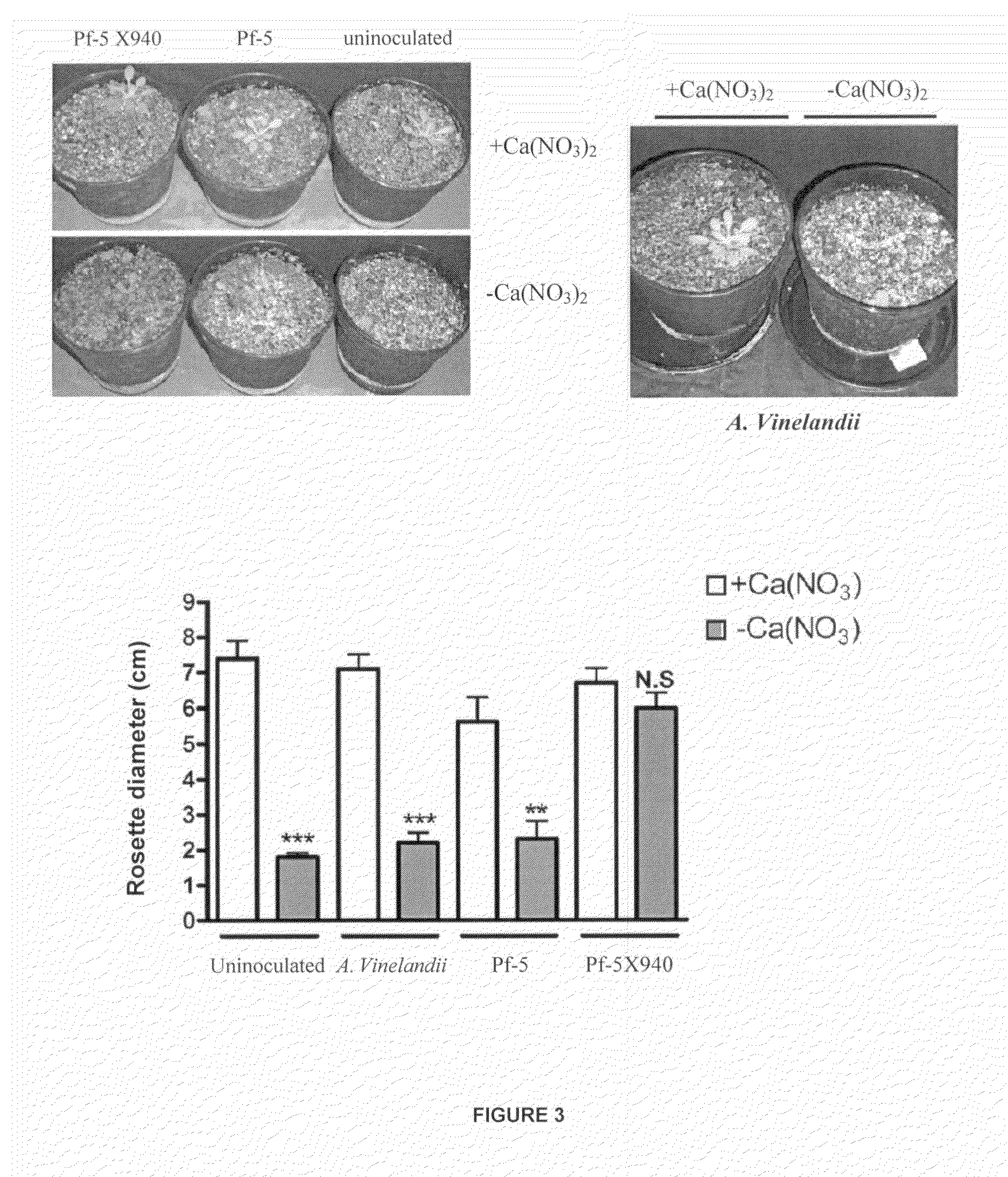Recombinant nitrogen-fixing bacterial strain, inoculum containing the same and application methods
a technology of nitrogen fixing bacteria and inoculum, which is applied in the field of recombinant nitrogen fixing bacteria strains, inoculum containing the same and application methods, can solve the problems that strains are not employed to improve productivity, and achieve the effect of improving plant productivity
- Summary
- Abstract
- Description
- Claims
- Application Information
AI Technical Summary
Benefits of technology
Problems solved by technology
Method used
Image
Examples
example 1
Construction of Recombinant Bacteria of the Invention
[0020]Two 255 by segments of PST—1306-PST—1307 and PST—1312-PST—1313 intergenic regions of (CP000304) Pseudomonas stutzeri A1501 were obtained through PCR using the following primers:
SEQ ID N° 1:5′-CGGGATCCCCGAATAGAGGTCTGTCCCCG 3′SEQ ID N° 2:5′-CGGGATCCCCGGGGCGCTGGTGC3′SEQ ID N° 3:5′-CGGTCGACTCGGTGCGGCGCTCG3′-SEQ ID N° 4:5′-CGGTCGACGCCAAGGCCGCCCGC 3′,
where the BamHI and SalI restriction sites have been underlined, respectively. The PCR cycle used for both amplification reactions was the following: 3 minutes at 94° C. (201.2° F.); 34 cycles of 45 seconds at 94° C. (201.2° F.)-30 seconds at 50° C. (122° F.)-30 seconds at 72° C. (161.6° F.) and 10 minutes at 72° C. (161.1° F.). The amplification segment corresponding to the PST—1306-PST—1307 intergenic region was digested with BamHI and bound to a kenamycin resistance gene obtained from the plasmid pUC4K (X06404) digested with BamHI, resulting in Plasmid A. The amplification segment ...
example 2
Bacteria Growth Conditions
[0022]The cultures were made in 125 ml Erlenmeyer flasks containing 25 ml of incubated L medium at 28° C. (82.4° F.) with stirring at 300 rpm. The L medium was prepared according to the following formula: 1 g KH2PO4, 3 g K2HPO4, 0.1 g NaCl, 0.5 g (NH4)2SO4, 0.25 g MgSO4 7 H2O, 1 mg FeCl3 6 H2O, 0.017 mg CuCl2 2 H2O, 0.029 mg ZnSO4 7 H2O, 0.144 mg MnCl2 H2O, 0.147 mg CaCl2 2 H2O, 0.005 mg NaMoO4, 1 g citric acid, 5 g glucose, 100 mg yeast extract, 1 L, pH=7. Two aeration conditions termed aerobiosis (Erlenmeyer flasks covered with Parafilm) and microaerobiosis (Erlenmeyer flasks covered with a screw lid) were used. In order to assess the growth in limiting nitrogen conditions, the L medium was used but without the addition of nitrogen, i.e. without the addition of (NH4)2SO4. The cultures started from an optical density of 0.05-580 nm. The pre-cultures used to make the cultures were performed under the same conditions as the culture (25 ml of L medium in 125 ...
example 3
Preparation of the Inoculum
[0023]The cultures were made in 125 ml Erlenmeyer flasks containing 25 ml of incubated L medium at 28° C. (82.4° F.) with stirring at 300 rpm during a period of 24 hours from LB agar plates. The culture was centrifuged at 10,000 g during a period of 5 minutes and it was resuspended in 25 ml of physiological saline (FS: 9 g NaCl / l). Then, the amount of bacteria present in these resuspended cultures was assessed, which resulted in the following value range: 8.108-2.109 CFU / ml. Each pot of 1 liter volume was inoculated with 0.2 ml of resuspended culture.
PUM
| Property | Measurement | Unit |
|---|---|---|
| volume | aaaaa | aaaaa |
| volume | aaaaa | aaaaa |
| volume | aaaaa | aaaaa |
Abstract
Description
Claims
Application Information
 Login to View More
Login to View More - R&D
- Intellectual Property
- Life Sciences
- Materials
- Tech Scout
- Unparalleled Data Quality
- Higher Quality Content
- 60% Fewer Hallucinations
Browse by: Latest US Patents, China's latest patents, Technical Efficacy Thesaurus, Application Domain, Technology Topic, Popular Technical Reports.
© 2025 PatSnap. All rights reserved.Legal|Privacy policy|Modern Slavery Act Transparency Statement|Sitemap|About US| Contact US: help@patsnap.com



